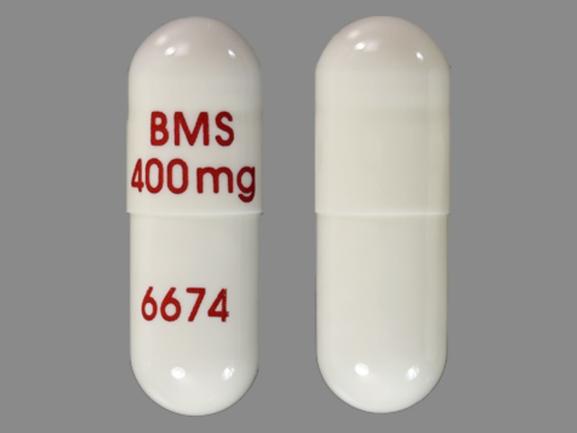Videx EC Dosage
Generic name: didanosine 125mg
Dosage form: capsule, delayed release
Drug class: Nucleoside reverse transcriptase inhibitors (NRTIs)
Medically reviewed by Drugs.com. Last updated on Nov 28, 2023.
VIDEX EC should be administered on an empty stomach. VIDEX EC Delayed-Release Capsules should be swallowed intact.
Recommended Dosage (Adult and Pediatric Patients)
The recommended total daily dose is based on body weight and is administered as one capsule given on a once-daily schedule as outlined in Table 1.
The recommended total daily dose to be administered once daily to pediatric patients weighing at least 20 kg who can swallow capsules is based on body weight (kg), consistent with the recommended adult dosing guidelines (see Table 1). Please consult the complete prescribing information for VIDEX (didanosine) Pediatric Powder for Oral Solution for dosage and administration of didanosine to pediatric patients weighing less than 20 kg or who can not swallow capsules.
|
Body Weight |
Dose |
|
20 kg to less than 25 kg |
200 mg once daily |
|
25 kg to less than 60 kg |
250 mg once daily |
|
at least 60 kg |
400 mg once daily |
Renal Impairment
Dosing recommendations for VIDEX EC and VIDEX Pediatric Powder for Oral Solution are different for patients with renal impairment. Please consult the complete prescribing information on administration of VIDEX (didanosine) Pediatric Powder for Oral Solution to patients with renal impairment.
Adult Patients
In adult patients with impaired renal function, the dose of VIDEX EC should be adjusted to compensate for the slower rate of elimination. The recommended doses and dosing intervals of VIDEX EC in adult patients with renal insufficiency are presented in Table 2.
| Creatinine Clearance (mL/min) |
Dosage (mg) | |
|---|---|---|
| at least 60 kg | less than 60 kg | |
| a Based on studies using a buffered formulation of didanosine. b Not suitable for use in patients less than 60 kg with CLcr less than 10 mL/min. An alternate formulation of didanosine should be used. |
||
|
at least 60 |
400 once daily |
250 once daily |
|
30-59 |
200 once daily |
125 once daily |
|
10-29 |
125 once daily |
125 once daily |
|
less than 10 |
125 once daily |
b |
Pediatric Patients
Urinary excretion is also a major route of elimination of didanosine in pediatric patients, therefore the clearance of didanosine may be altered in pediatric patients with renal impairment. Although there are insufficient data to recommend a specific dose adjustment of VIDEX EC in this patient population, a reduction in the dose should be considered (see Table 2).
Patients Requiring Continuous Ambulatory Peritoneal Dialysis (CAPD) or Hemodialysis
For patients requiring CAPD or hemodialysis, follow dosing recommendations for patients with creatinine clearance of less than 10 mL/min, shown in Table 2. It is not necessary to administer a supplemental dose of didanosine following hemodialysis.
Dose Adjustment
Concomitant Therapy with Tenofovir Disoproxil Fumarate
In patients who are also taking tenofovir disoproxil fumarate, a dose reduction of VIDEX EC to 250 mg (adults weighing at least 60 kg with creatinine clearance of at least 60 mL/min) or 200 mg (adults weighing less than 60 kg with creatinine clearance of at least 60 mL/min) once daily taken together with tenofovir disoproxil fumarate and a light meal (400 kilocalories or less, 20% fat or less) or in the fasted state is recommended. The appropriate dose of VIDEX EC coadministered with tenofovir disoproxil fumarate in patients with creatinine clearance of less than 60 mL/min has not been established.
More about Videx EC (didanosine)
- Check interactions
- Compare alternatives
- Drug images
- Side effects
- During pregnancy
- Drug class: nucleoside reverse transcriptase inhibitors (NRTIs)
- Breastfeeding
Patient resources
Other brands
Professional resources
Other brands
Related treatment guides
Further information
Always consult your healthcare provider to ensure the information displayed on this page applies to your personal circumstances.


